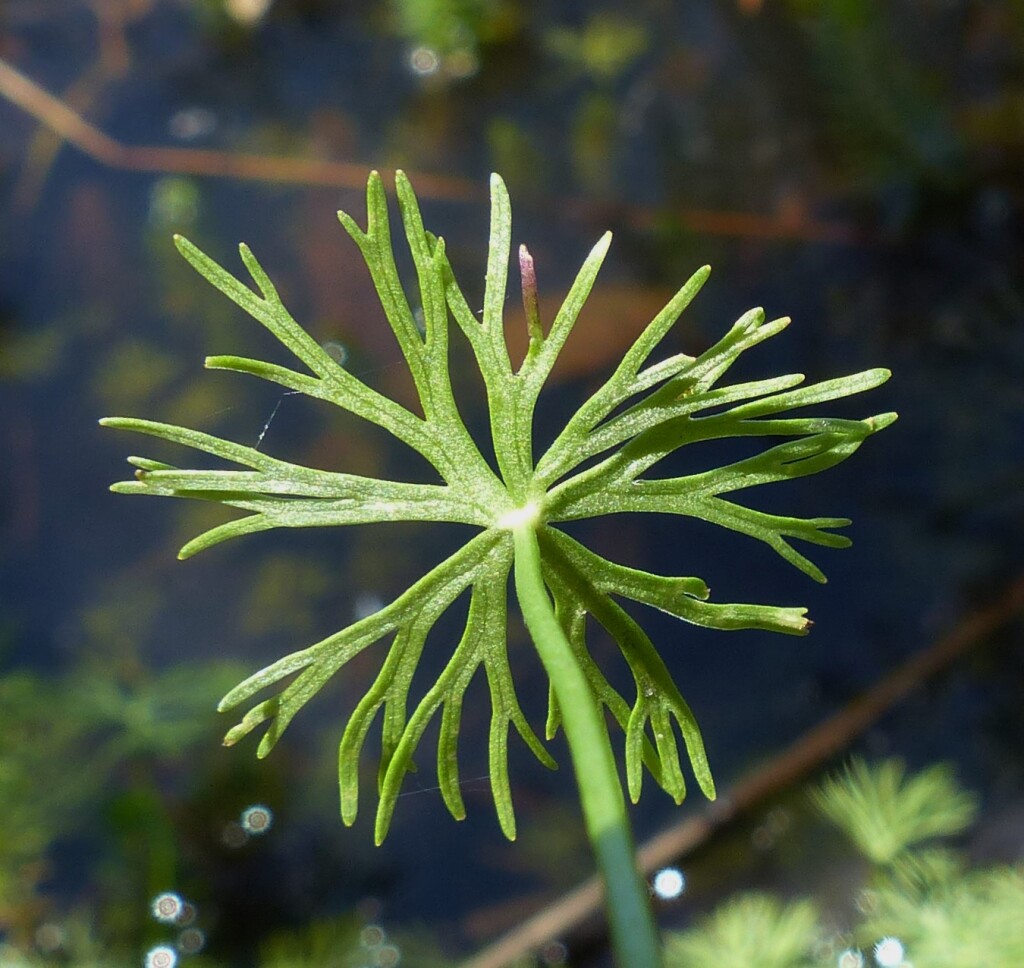Ranunculus inundatus
R.Br. ex DC. River ButtercupStoloniferous, aquatic or semi-aquatic perennial, to c. 30 cm high. Leaves both tufted at base and cauline; petioles to 15 cm long (rarely more in submerged plants); lamina finely palmatisect, c. orbicular in outline, 1–5 cm diam., with ultimate segments narrow-linear, 0.5–2 mm wide, glabrous or with very few scattered hairs beneath. Flowering stems erect, exceeding leaves, usually 1–3-flowered; sepals 5, spreading, broadly ovate to obovate, 2–3.5 mm long, glabrous; petals 5–7, narrowly obovate, 4–7 mm long, 2–4 mm wide, yellow, glossy; nectary lobe free in the upper half, obtuse, often oblique, 0.5–1 mm long overall; stamens c. 20–30. Achenes usually 20–45, obovate, c. 1.5 mm long, the sides almost smooth or with obscure low tuberculate ridges; beak slender, c. 1 mm long, reflexed; receptacle densely hispid in the staminal zone, subglabrous between the achenes. Flowers Sep.–Feb.
LoM, MuM, Wim, GleP, Brid, VVP, VRiv, MuF, GipP, OtP, WaP, Gold, CVU, GGr, DunT, NIS, EGL, EGU, HSF, HNF, MonT, VAlp. Also WA, SA, Qld, NSW, ACT. Excepting the north-west, scattered, but locally rather common in permanent swamps, dams and backwaters of rivers throughout the State, often occurring near other aquatic or semi-aquatic Ranunculus species.
See note under R. amplus.
Walsh, N.G. (1996). Ranunculaceae. In: Walsh, N.G.; Entwisle, T.J., Flora of Victoria Vol. 3, Dicotyledons Winteraceae to Myrtaceae, pp. 35–63. Inkata Press, Melbourne.
 Spinning
Spinning



